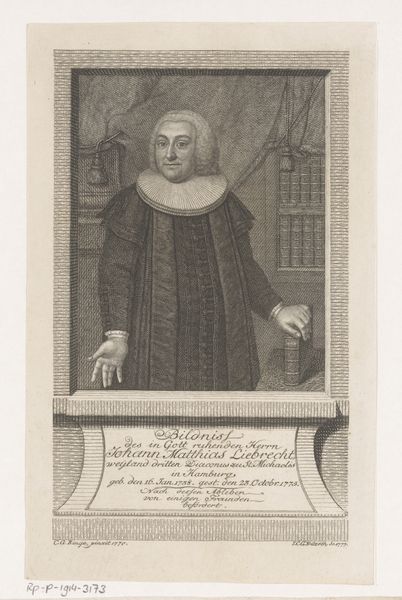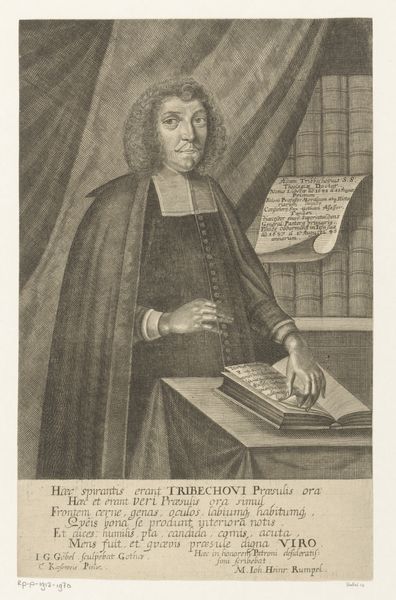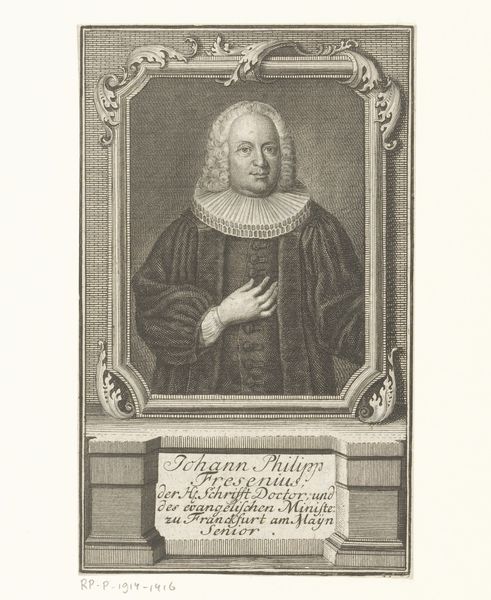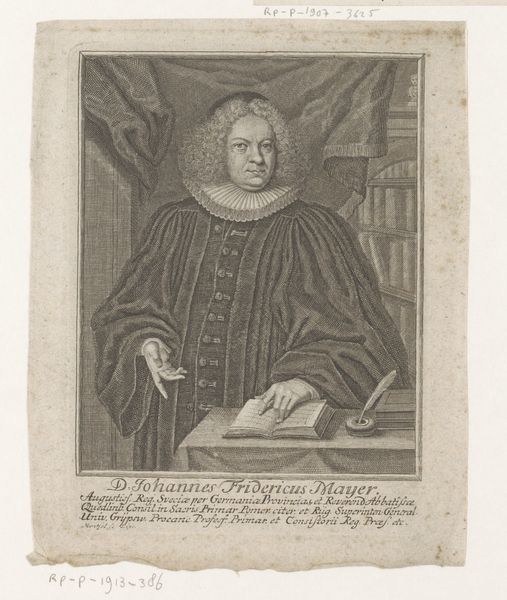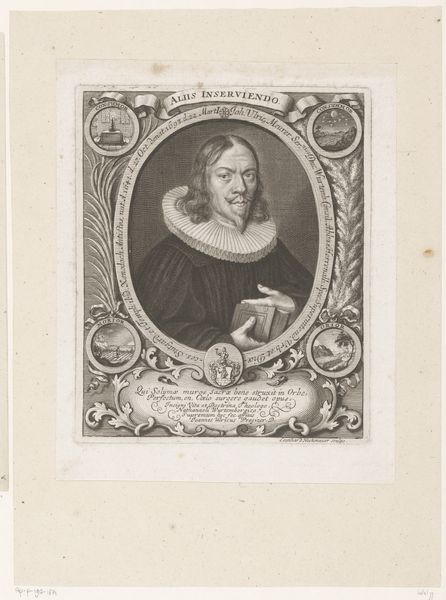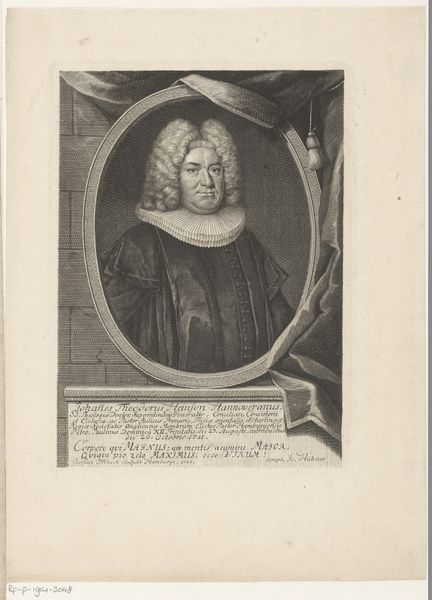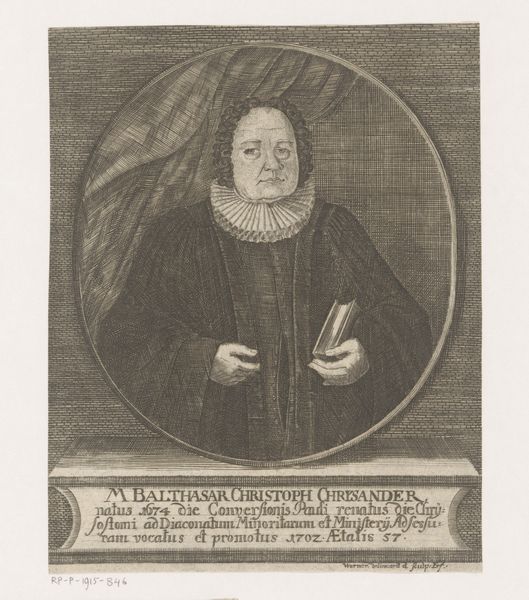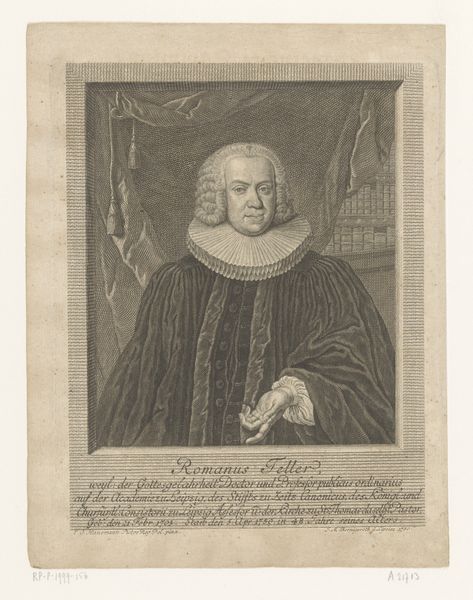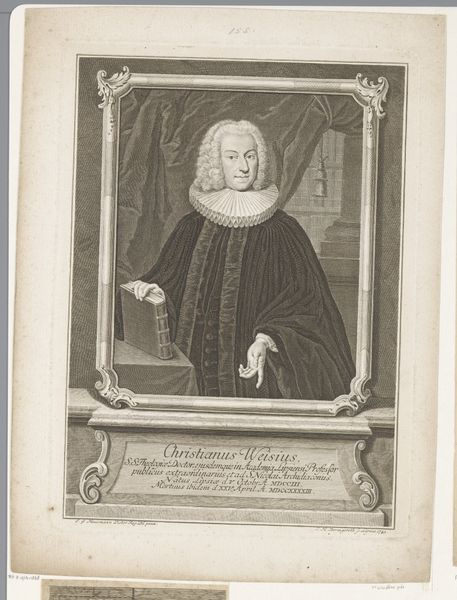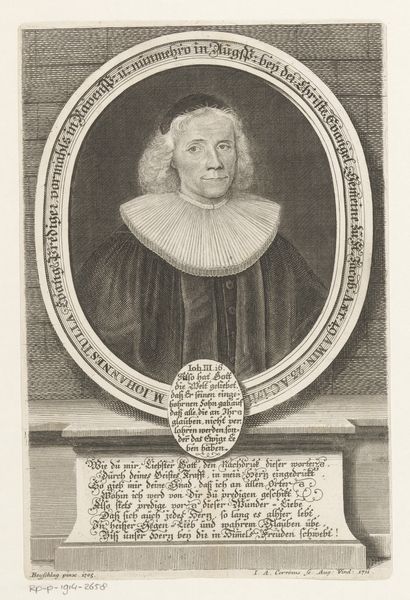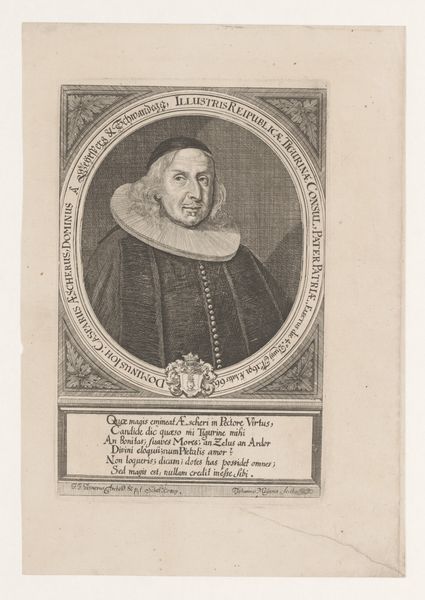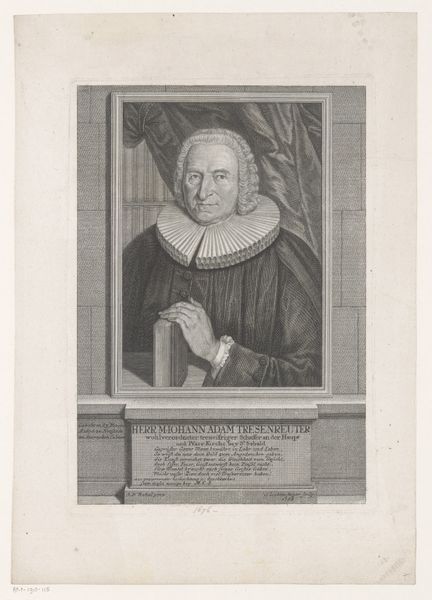
engraving
#
portrait
#
baroque
#
old engraving style
#
history-painting
#
engraving
#
monochrome
Dimensions: height 149 mm, width 68 mm
Copyright: Rijks Museum: Open Domain
Curator: Let's examine this engraving from around the 1690s, "Portret van Georg Meyer," crafted by Hermann Mosting. A baroque depiction of, well, Georg Meyer. Editor: It strikes me first and foremost as incredibly intricate, all achieved through what must have been meticulous, painstaking labor with metal and acid. What details! Curator: Engravings carry so much weight, don't they? They were a primary way to disseminate imagery and information, a tangible symbol of the era’s visual language, especially within burgeoning intellectual circles. Think of the Reformation, relying on images to influence the masses. Editor: Absolutely. And speaking of the process, you have to consider the role of the engraver as an artisan. They are interpreting the likeness of Meyer. Who dictated that interpretation? How many prints were pulled, and how were they distributed? Were these commissioned portraits for specific individuals, or were they produced for a wider market? Curator: Meyer's steadfast gaze holds such symbolic significance. He grasps that book - evidence, wisdom...but I also find that ornate ruff interesting. Notice how the light falls? His expression feels knowing but somewhat subdued. Editor: That ruff really highlights the labor of both maker and consumer! I wonder about the social status implied in the layers of fabric and detailed work. You can almost feel the starch and see the delicate stitching required to maintain its shape. This is definitely speaking of status through material culture. Curator: His gesture of holding a book also is so interesting. Is it a representation of piety, learning, or something else? How did book ownership in Meyer's circle become associated with intellect? Did books themselves serve as symbolic capital? The text, like a subtle script. Editor: To create such fineness, imagine the workshops where apprentices were trained, the tools, and the economics of art production itself...Engraving allows for relatively affordable, yet detailed images for dissemination within particular communities or classes, reflecting patronage networks that valued his kind of service to Meyer and the communities who may have needed access to a visual symbol of religious authority. Curator: Yes, each crosshatch tells its own tale! Each element carefully orchestrated, layered with meaning… This small window into Meyer's world prompts me to question the deeper narratives and cultural meanings inherent in such images. Editor: Seeing the final result, it's easy to overlook the means and relations behind it: each mark bears the trace of hand and history. Thinking about its place within a world of religious movements and political complexities makes the image all the more provocative.
Comments
No comments
Be the first to comment and join the conversation on the ultimate creative platform.

